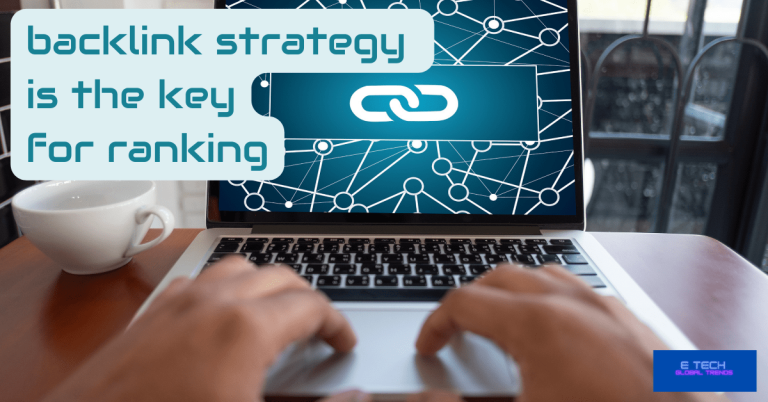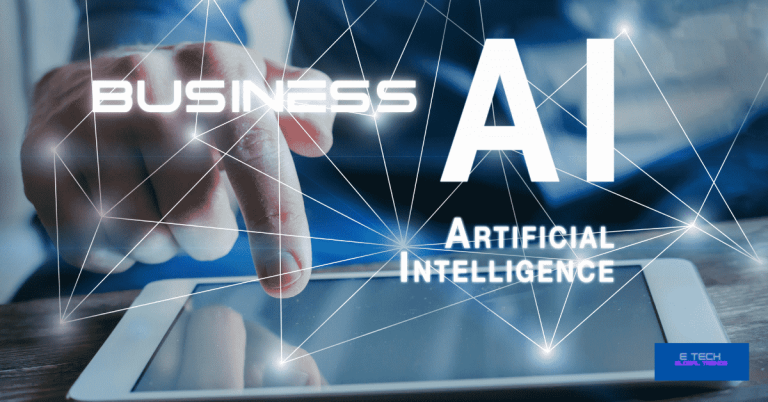Generative AI
For the past 6 months, this concept showed 224K searches on the net. That is an increase of more than 1000%. In this review, we hope to bring you some amazing insights. Join us. Generative AI (Artificial Intelligence) is a subset of AI that can produce fresh and original outputs, such as music, language, and images, based on a variety of inputs and methods.
What is generative AI?
Yes, let’s clear it out.
An intriguing advancement in artificial intelligence is the utilization of data sets to create new and original outputs in response to human requests. The possibilities are boundless, ranging from writing poems to making music.
How does generative AI work?
A subtype of artificial intelligence known as “generative AI” is concerned with producing new and unique material, including music, photos, writing, and other types of media.
these types of models learn to produce new data that mimics the patterns and traits of the training data, as opposed to standard AI models, which are there to detect patterns and develop predictions based on data that already exists.
We will try to explain in simple terms.
1.0 this technology frequently makes use of a well-liked method known as GAN Generative Adversarial Networks.
2.0 A generator & a discriminator are the two neural networks that make up GANs.
3.0 The discriminator network aims to differentiate between the created samples and genuine information from the training set, while the generator network creates fresh data samples.
4.0 The generator gradually increases its capacity to provide more realistic data as a result of the two networks’ competitive learning process.
However,
Did you realize those generative AI models also provide advantages for businesses?
Improved decision-making is one of the main benefits of generative AI models. These models assist firms in making better decisions by analyzing data and offering insights and predictions. By producing concepts for fresh goods and procedures, they also promote innovation and give businesses a competitive edge.
Then,
Another application of generative AI that stands out is personalization. Businesses can provide individualized customer experiences, increasing customer satisfaction and loyalty, by training the models on specific user data.
The expedited TAT (Turn Around Time) is a significant additional benefit. By accelerating the generation of new data, generative AI shortens project schedules and helps organizations be more responsive to client requests.
Isn’t it amazing?
Is it as easy as they say?
Some drawbacks of generative AI
The possible drawbacks of using generative AI models must be taken into account,
though.
1.0 The time and Resource fact
The first drawback is that developing such models can be time- and resource-intensive.
2.0 Accuracy fact
Another difficulty is ensuring the output is accurate.
Additionally,
3.0 Slow Response
because of the size of the operations, generative AI models could respond more slowly.
Chatbots and AI voice assistants are two examples of real-time interactive applications that may be impacted.
4.0 Consistency fact
Another factor is the consistency of the outcomes. This can happen for these reasons,
such as;
- Incomplete,
- incorrect, or
- out-of-date data
might result in unreliable forecasts since generative AI depends on high-quality data.
5.0 Security and ethical issues
Concerns about ethics and security are also brought up.
Companies should exercise caution when training AI models with user data, taking accessibility and privacy issues into account.
Additionally,
6.0 Ethical and bias issues
utilizing generative AI models raise ethical and bias issues. The models may reproduce any biases or prejudice present in the training data in the final product.
The possibility for manipulation and deception when utilizing generative AI to produce bogus material also raises ethical questions.
In summary, we should keep in mind there are more significant advancements than disadvantages
What are the Pros of Generative AI?
Generative AI models have an advantage over traditional AI in;
- decision-making,
- innovation,
- personalization, and
- quicker TAT.
However,
It is imperative to deal with issues including resource intensity, sluggish response times, result reliability, and ethical implications.
Businesses can make use of the promise of using generative AI models while reducing potential dangers by properly taking into account these considerations.
What are the challenges that will meet for generative AI configuration?
Well, a good question. It will be really interesting to know them.
Is it too difficult?
Hmmm. no,
it’s not the way of approach. then?
The simple answer is “It is possible”
The field of generative artificial intelligence (AI), which can produce original and creative stuff including pictures, writing, and music, has gained prominence.
Its widespread acceptance does, however, face some difficulties, just like any other new technology. These are the main difficulties encountered in the mainstreaming of generative AI:
1.0 The requirement for massively parallel computing
Computer resources are used extensively by generative AI models like;
- GAN (Generative Adversarial Networks)
- VAE (Variational Auto Encoders).
1.0 VAEs are yet another method that is often employed in generative AI.
2.0 The neural network topologies known as VAEs can encode and decode data.
3.0 The input data is compressed by the encoder and represented in a latent space, which is then used by the decoder to recreate the original data.
4.0 VAEs can produce fresh data that is similar to the training data by sampling within the latent space of the data.
These models frequently require significant computational resources for training and running.
such as high-performance GPUs or additional specific hardware. In order to manage the computational needs of generative AI, businesses and individuals embracing it must make expensive investments in strong infrastructure.
2.0 inadequate quality/quantity of generated data
To produce useful results, AI models significantly rely on rich and varied training data.
Getting a sizable and relevant dataset can be difficult, especially in fields where data is hard to come by or expensive to gather.
Additionally, maintaining data quality is essential because poor or biased data might harm generative models’ output. It takes a lot of time and resources to prepare and curate datasets that can use to train generative AI.
In situations where speedy production requires, like interactive user interfaces for real-time content creation, the time needed for each sample attempt can impede real-time applications.
3.0 tempo of sampling
Using generative AI models, producing high-quality material frequently necessitates numerous iterations and sampling efforts.
For instance,
in the creation of images, it may be necessary to sample from the model several times before getting a high-quality image.
How can we solve these massive challenges?
Yes, of course, there are some ways to gain it. So experts suggest following criteria.
1.0 Hardware technology advancements
The computing power issue posed by the adoption of generative AI can be lessened with continued improvements in computational technology, such as GPUs & special accelerators. Hardware advancements that offer faster throughput, as well as better processing capabilities, can shorten training and inference durations, rendering generative AI more widely available.
2.0 Improving data curation and gathering
Processes for collecting data should be improved, especially in fields where data is scarce.
Active learning, transfer learning, and data augmentation are among the methods that can assist reduce problems with data quantity. The reliability and quality of training datasets can also be increased by employing rigorous data curation procedures,
such as data cleansing, validation, and addressing biases.
3.0 Strategies for Optimization
The effectiveness of generative AI models is currently being actively researched by researchers and practitioners. Reducing the computational complexity of generative models without noticeably sacrificing performance is the goal of techniques like;
- network pruning
- model distillation and
- low-rank approximation.
These improvements can speed up sampling and enable real-time creation in contexts with limited resources.
Although generative AI has great potential, there are obstacles to overcome before it can be widely used.
The main difficulties include;
- a lack of computing power,
- poor data quality or quantity, and
- slow sample rates.
We can make generative AI more widely and effectively used in a variety of sectors by utilizing improvements in hardware technology, enhancing data collection as well as curation procedures, and researching optimization strategies.
Is ChatGPT a Generative AI?
Yes, it is…
Modern technology for processing natural languages is used in ChatGPT Generative AI.
By enabling deeper and more complicated dialogues between humans and machines, this kind of AI has the potential to completely transform the workplace.
ChatGPT may give staff members better insights, more nuanced counsel, and more effective processes by utilizing technology for natural language processing to train AI algorithms to create useful and relevant interactions.
Additionally, ChatGPT Generative AI gives users a more intimate and conversational experience, which can improve workplace engagement, comfort, and efficiency.
Employees can make decisions, get feedback in real-time, and access information quickly and conveniently with ChatGPT Generative AI.
Will it be a matter of the coding capability based on AI?
Yes, it’s not just science fiction.
It will… then how?
By 2028, means by in next 5years generative AI might make software developers outdated.
Really?
For developers who spend their days writing CRUD screens & landing pages,
CRUD represents
The 4 operations that require to develop persistent storage software create, read, update, and delete. These four operations are collectively referred to as CRUD in the field of computer programming.
who never have to design algorithms or data structures, who perform tasks that have already been performed countless times, are the ones who will eventually become obsolete.
Other software engineers, such as those who create core systems, well-known libraries, compilers for programming languages, and so forth, won’t even notice the AI thing because it doesn’t do what they do.
Is generative AI create issues?
The use of generative AI may be problematic. The majority of models are created in the US using convenient sources that lean in one direction. and are most easily accessible there.
This is where the problem starts. It would be perilous to force the US’s ongoing culture war upon the remaining regions of the globe, especially in light of requests to limit data training to one group of one religion. Generative AI must be accessible to all people and representative of the world.
Will AI crash down?
Suppose you got it?
means AI technology work nicely only when human manage it?
This was true prior to the development of generative AI & LLMs, Large Language Models.
where AI is often just as accurate as the data this is trained on. However, the design of the transformer now gives generative AI the capacity to surpass what it learned. This is especially true for the GPT4 model, which exhibits
AGI “early symptom of Artificial General Intelligence ” since it is capable of simple context- and logic-based reasoning.
However, data continues to be important, as well as if the model architecture seems amazing, inadequate data quality will eventually lead to a terrible model.
What are the fields where generative AI use successfully?
This will be a stunning trend in the near future. A vast number of businesses and areas are transforming with these models.
1.0 Healthcare
By modeling the molecular interactions between pharmaceuticals and cells.
generative AI models may utilize to create new medications and therapies. On the basis of a patient’s medical background and genetic information. they may also utilize it to create individualized treatment programs.
2.0 Entertainment
These models have enormous potential applications in the entertainment sector.
notably in the areas of video games, movies, and music.
Of course, gaming graphics will be more realistic than now.
These models have the ability to provide dynamic soundscapes, realistic and immersive surroundings, and even whole virtual characters.
3.0 Design
Architecture, clothing, and product design may all benefit from generative AI’s fresh ideas.
The models are capable of analyzing current designs and generating fresh concepts that designers may then develop.
4.0 business
Realistic market simulations, the detection of patterns and trends, and the optimization of investment portfolios can do with the help of the world of finance.
5.0 Art
Creative works of art like paintings, music, and books may be made with generative AI. These algorithms may evaluate already-created works and produce fresh concepts for artists to explore.
Summary
By automating creative tasks, producing fresh, original ideas, and modeling complex relationships, this technology offers the potential to revolutionize a variety of sectors and areas.
Hope this helps.
Read more on related topics here
artificial intelligence music generator







